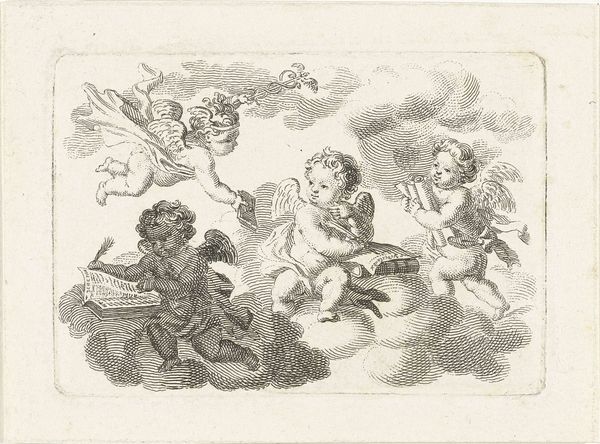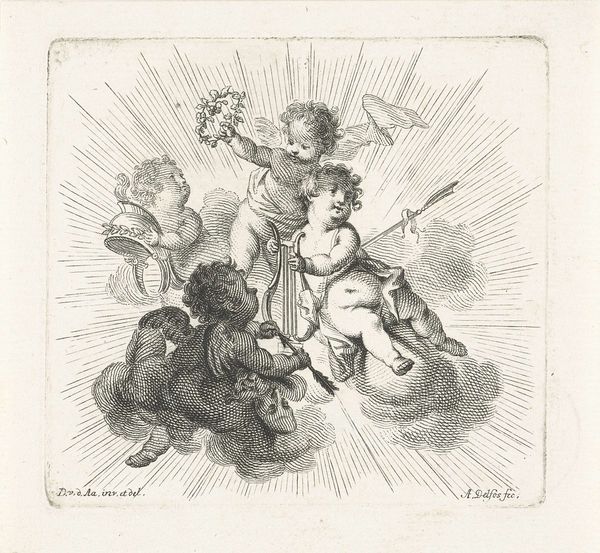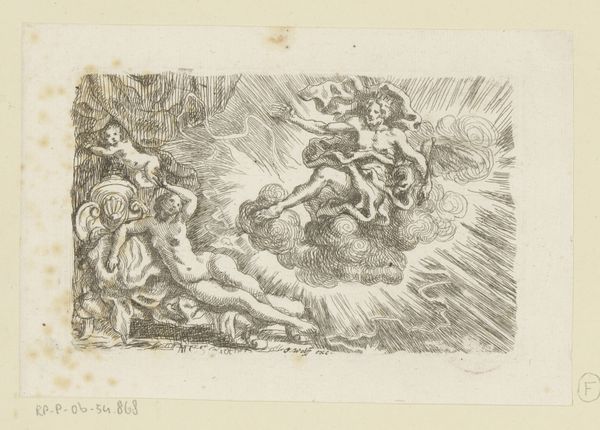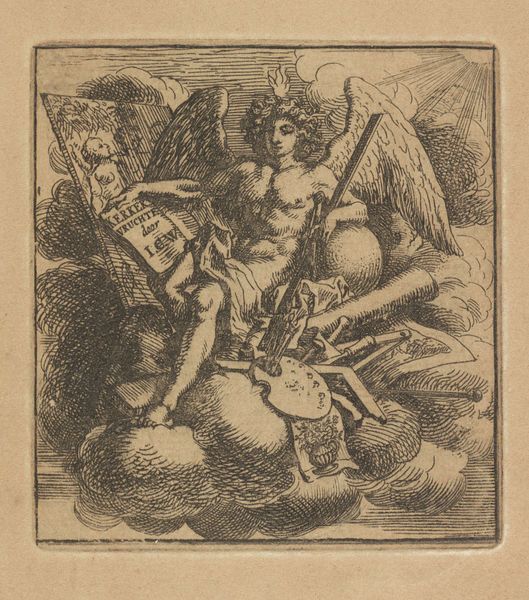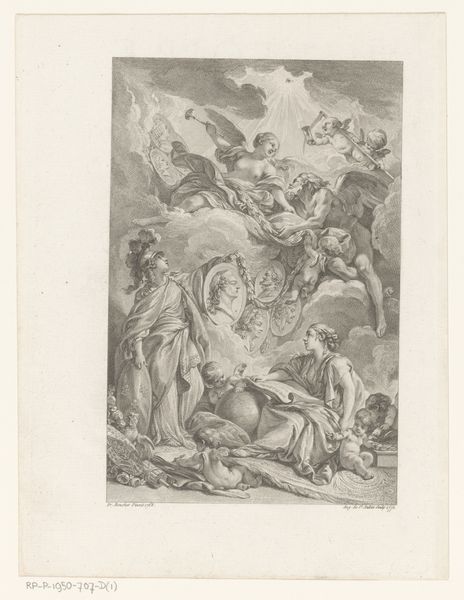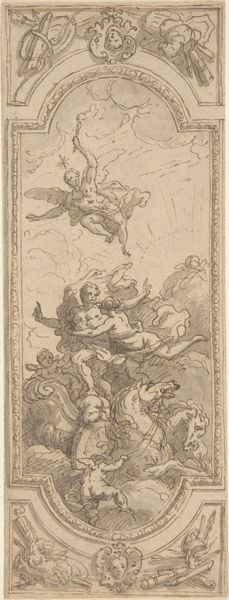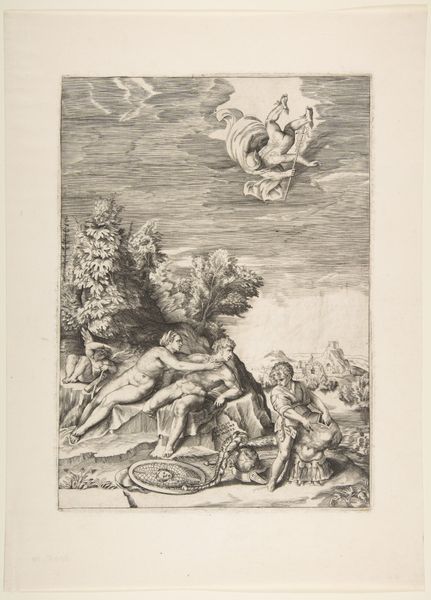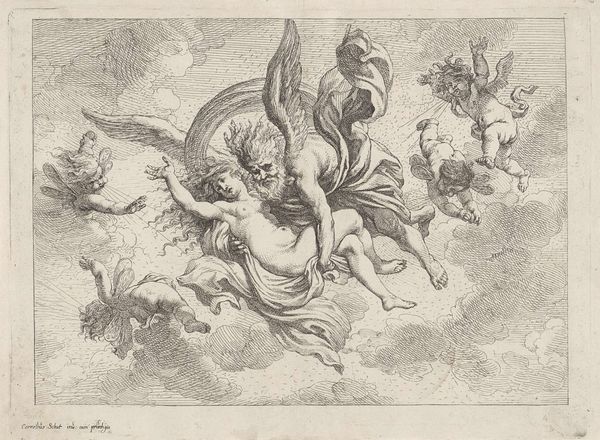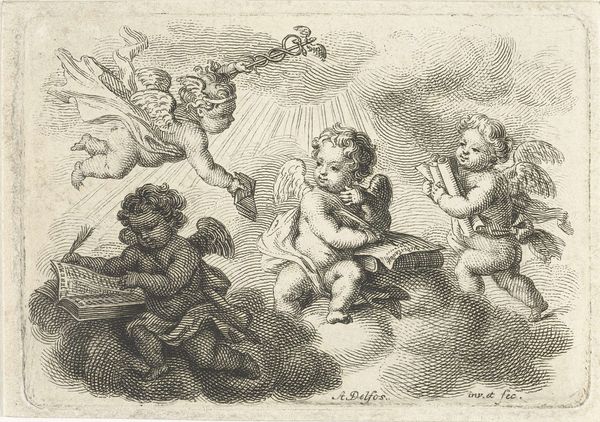
Vier putti als personificaties van kunsten en wetenschappen 1741 - 1820
0:00
0:00
abrahamdelfos
Rijksmuseum
Dimensions: height 59 mm, width 83 mm
Copyright: Rijks Museum: Open Domain
Abraham Delfos created this print, "Vier putti als personificaties van kunsten en wetenschappen," sometime in the 18th century. It shows four cherubic putti who embody the arts and sciences, and it's fascinating to consider this work in its historical context. The 18th century was a time of profound social and intellectual change; the enlightenment was changing the way people thought about the world. The focus on reason and empirical knowledge often excluded women and people of color. How could their contributions to the arts and sciences be included in a world that refused to recognize them? Delfos’s choice to depict these concepts through cherubic figures offers a softer, more accessible interpretation of enlightenment ideals. The emotional resonance of this choice invites us to think about the humanistic side of the enlightenment. While these figures are ostensibly genderless, the symbolism and imagery used in the print reflect a very specific understanding of gender, race, and class. This print encourages us to consider how these idealized forms of art and science can reflect societal biases or open pathways to a more inclusive vision.
Comments
No comments
Be the first to comment and join the conversation on the ultimate creative platform.
